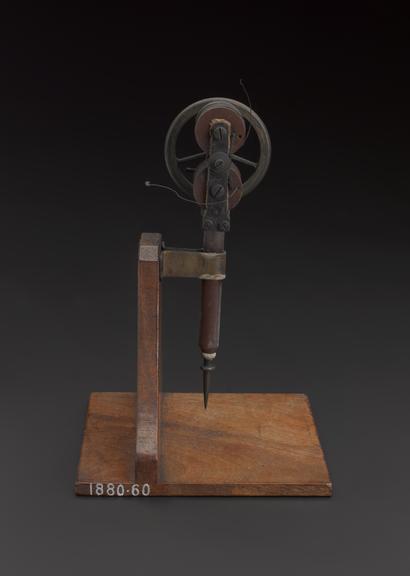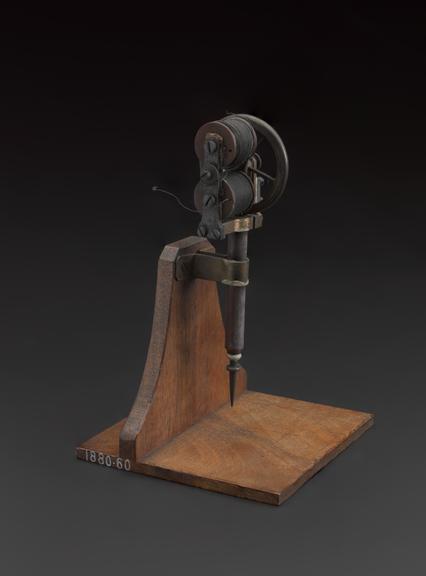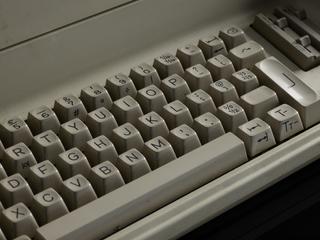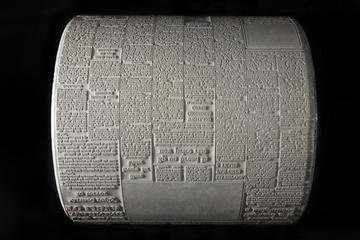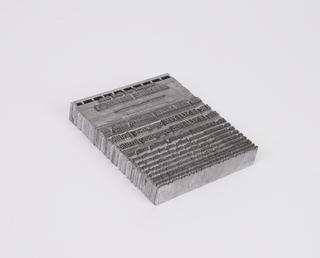
Original model of Edison's patent electric pen, 1875-1876
- Made:
- 1875-1876 in Menlo Park
- designer:
- Thomas Alva Edison




Original model of Edison's patent electric preparatory pen for preparing stencils, 1875-1876, mounted on wooden stand.
By this invention of Thomas Edison, a paper stencil plate was rapidly prepared, which could be used for producing a large number of copies or prints of the original writing, simply by running an inked roller over the back of the stencil.
The instrument consisted of a stylus, from the end of which projects a needle point; the needle is connected to a small flywheel and electric motor, at the end of the instrument, and by rotation of the motor the point is very rapidly protruded and drawn back again so that in passing over a sheet of paper the track of the stylus is left finely perforated. The electric current is supplied by flexible conductors.
Edison’s “electric pen” is a much less known, and much less successful, example of his work than his well-known carbon filament lightbulb.
It was one of the first inventions at Menlo Park, developed in 1875 and patented in August 1876 with the help of his British assistant Charles Batchelor.
The battery powered pen could make 50 punctures a second onto paper, creating a stencil of what you want to write (or draw) in multiple layers of paper.
The layers would then be inked over in an accompanying flatbed “duplicating press”, where a roller would press ink through the holes in the paper. This allowed many copies to be made at once, like an early photocopier.
Edison claimed over 5000 copies could be made at once.
Details
- Category:
- Printing & Writing
- Object Number:
- 1880-60
- Materials:
- metal (possibly steel), wooden stand (possibly mahogany), cotton thread, covered metal wire and brass
- Measurements:
-
overall (estimate, inc. base): 175 mm x 120 mm x 120 mm, weight: 0.260 kg
- type:
- stencil cutter
- credit:
- Donated by Thomas Alva Edison
